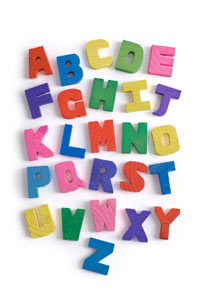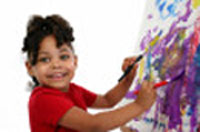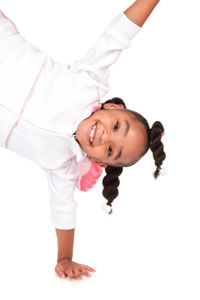|
|
The CSA classroom is a spacious, 4000SF room filled with high quality learning centers for cognitive and physical development. Constructed of
safe, cushioned Teraflex flooring, the room is set up so that children have space to run and play with multiple Learning Centers stationed
throughout.
Our highly qualified teachers have the highest credentials and many years of experience. We maintain a very low student-teacher ratio of 5:1 as we
emphasize lots of one on one time and individual attention for each child. We aim to develop happy, well rounded children, foster a love of
learning and prepare children for success in Kindergarten and beyond.
What children discover in each Learning Center
Construction and Design Center
Children have space to engage in construction activities and let their imaginations soar.
Some typical items in this center include:
Numerous sets of blocks of all shapes and sizes: Lincoln logs, wooden blocks, Legos, Alphanumeric cubes, KNex
Large and small trucks, cars, airplanes, ships, and other vehicles
Race cars and tracks
Wooden train set complete with trains, tracks, tunnels, bridges, map, people, and accessories
Construction toys, hammers, wrenches, bolts and screws
Theme related Books plus paper and pencils so they can draft design plans and illustrate structures
What children do
Practice designing, building, organizing and implementing projects.
What children learn
Cognitive skills such as classification, spatial relationships, balance and cause and effect.
How children grow
Children gain a great deal of personal satisfaction and pleasure as they work in groups and build relationships with their peers.
Dramatic Play Center
A warm and inviting center enhances the children’s interest and involvement. Props which reinforce the changing themes keep the children excited about
pretending and playing in the Dramatic Play center. Some typical items in this center include:
Kitchen complete with stove, oven, microwave and cabinets
Dishes, utensils, pots, pans, food sets, telephone
Dress up clothes, purses, hats, jewelry
Large doll house complete with furniture
Baby dolls, crib, clothing and accessories for taking care of the dolls
Stuffed animals and puppets
What children do
Role-play real life situations, share and cooperate with other children
What children learn
Invaluable language, communication and social skills that lead to future academic success.
How children grow
Children learn how to creatively express ideas and feelings in a group setting.
Creativity & Art Center
In addition to theme related activities, some typical items in this center include:
Painting supplies, pencils, crayons and markers
Easels
Strings and beading
Play dough and accessories
Glue and scissors
Various paper supplies
What children do
Paint, draw and create their own open-ended art using a variety of mediums and materials.
What children learn
Express creativity and imagination; discover line, color, shape and texture.
How children grow
Children develop their memory and artistic expression skills.
Reading and Listening Center
In addition to books at every center, we provide a separate, welcoming center for children to experience the benefits of reading and enjoying stories.
With large bean bag chairs and a wide selection of literature, children are exposed to:
Quality children’s literature, magazines, songs and poetry
Leapfrog hands on electronic phonics and reading game systems
Young children's laptops packed with phonics games for all levels and abilities
Hands on phonics puzzles which match pictures to sounds
A CD player, headphones, stories recorded on CD
Rugs, beanbags and other soft elements
What children do
Read, listen and respond to many genres of literature from poetry to non-fiction.
What children learn
Build vocabulary, develop reading comprehension, letter sound recognition and reading readiness.
How children grow
Children develop a love for reading and lay the foundation for future learning.
Math & Manipulatives Center
This center reinforces the number of the week, counting from 0 to 20 and backwards, counting by 5's, 10's and 20's, and more.
Some typical items in this center include:
Small calendar, weather and number charts
Magnetic numbers with magnetic white boards
Puzzles, games and flash cards
Hands on puzzles which match pictures to numbers
Large Abacus and other manipulatives for sorting
Paper, pencils, notebooks, index cards
Measuring cups and spoons, cookie cutters in varying shapes and other materials used to weigh and measure
What children do
Count, group, weigh, measure, make patterns, explore shapes and make comparisons between sets.
What children learn
Cognitive skills such as patterning, number recognition, counting and graphing.
How children grow
Children build small motor, problem solving and social skills as they work together in groups
Science & Sensorial Center
Some typical items in this center include:
Sand table
Shells, rocks, leafs, feathers and other items from nature
Magnets and magnetic items
Magnifying glasses and mirrors
Hands on toys that illustrate scientific concepts
What children do
Experiment with various sensory materials through theme-related activities.
What children learn
Explore, solve problems and make predictions related to various science and nature concepts.
How children grow
Children extend their curiosity about the world around them and their interests in natural phenomena.
Math & Manipulatives Center
This center reinforces the number of the week, counting from 0 to 20 and backwards, counting by 5's, 10's and 20's, and more.
Some typical items in this center include:
Small calendar, weather and number charts
Magnetic numbers with magnetic white boards
Puzzles, games and flash cards
Hands on puzzles which match pictures to numbers
Large Abacus and other manipulatives for sorting
Paper, pencils, notebooks, index cards
Measuring cups and spoons, cookie cutters in varying shapes and other materials used to weigh and measure
What children do
Count, group, weigh, measure, make patterns, explore shapes and make comparisons between sets.
What children learn
Cognitive skills such as patterning, number recognition, counting and graphing.
How children grow
Children build small motor, problem solving and social skills as they work together in groups
Writing Center
Some typical items in this center include:
Paper
Pencils, markers, crayons, colored pencils
Magnetic letters, magnetic pictures and individual magnetic boards
Letter and phonics tiles
Magazines
Examples of print including alphabet letter wall, manuscript chart, their names pre-printed for tracing
What children do
Experience writing via a variety of writing materials
What children learn
Communicate ideas and messages through words, letters and drawings
How children grow
Children express their ideas via writing and enrich their writing experiences
Sports Center
Some typical items in this center include:
Brightly colored, soft balls of varying sizes and shapes
Balance boards, spinning toys, hoops
Obstacle courses, tunnels, climbing equipment
Soccer goals, basketball hoop
Medicine balls
Child size mats
What children do
Try out different equipment, practice what they're taught in sports class
What children learn
Gross motor skills, balance, coordination, proper technique for kicking, throwing, dribbling and passing the ball
How children grow
Children develop strong bodies and healthy minds, build confidence in their achievements and in their athletic abilities
Please call us at 407-925-6812 to reserve a spot for your child.
|








|















